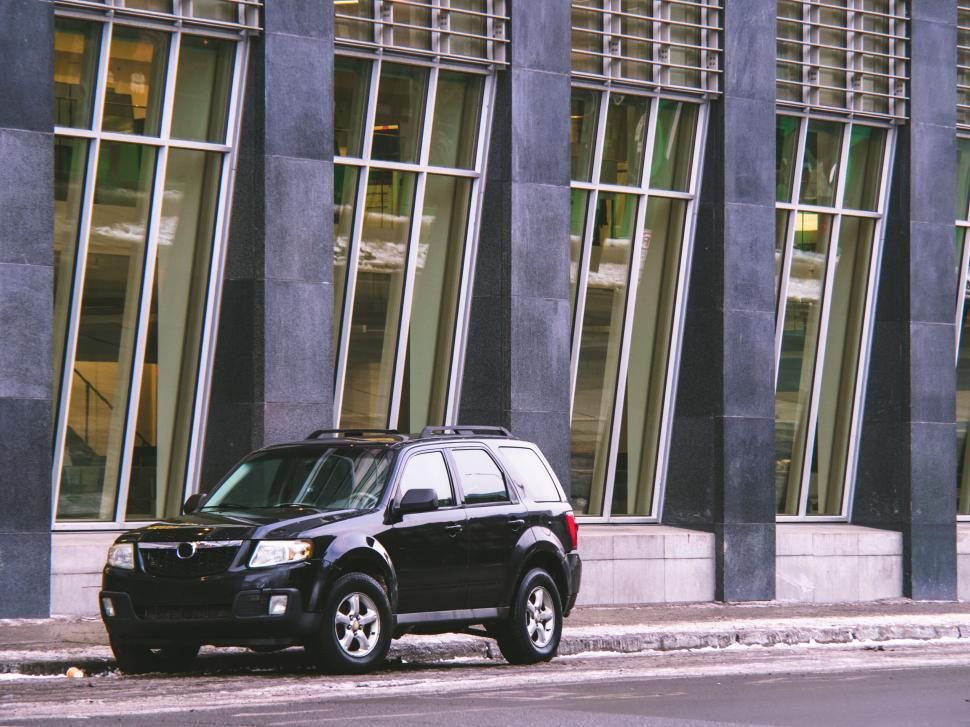Every day, millions of drivers hit the road, often with a sense of routine and confidence. However, vehicle accidents occur all over the country every single day, and tragically, many of them are easily avoidable. The stark reality, according to the National Safety Council, is that approximately 40,000 people lost their lives in vehicle accidents in 2018, a grim statistic that held steady for three consecutive years. Globally, the World Health Organization reports that approximately 1.19 million people die each year as a result of road traffic crashes, with another 20 to 50 million suffering non-fatal injuries, many leading to long-term disabilities.
Understanding these common driving mistakes is not just about avoiding tickets or minor fender-benders; it’s about preventing serious injuries and fatalities. The context of these incidents often involves everyday drivers on routine trips, whether commuting to work, running errands, or picking up children. This highlights that even the most mundane drives can become dangerous if fundamental safety practices are overlooked.
This article aims to provide an objective and evidence-based analysis of the top driving mistakes that frequently lead to accidents. By shedding light on these prevalent errors, we hope to empower drivers with the knowledge and actionable advice needed to cultivate safer habits, protect themselves and their passengers, and contribute to safer roads for everyone. Let’s delve into these critical areas, starting with issues that frequently divert our attention and compromise our control.
1. **Distracted Driving**
With the proliferation of smartphones and increasingly busy lives, distracted driving has unequivocally emerged as one of the most serious and common driving mistakes today. It encompasses any activity that diverts a driver’s attention away from the primary task of operating a vehicle, whether it’s checking social media, eating a meal, or adjusting the GPS. This loss of focus significantly increases the likelihood of accidents, affecting a broad demographic from teenagers to experienced adults.
The gravity of distracted driving is underscored by alarming statistics. The National Highway Traffic Safety Administration reported that 3,166 people died in 2017 as a direct result of driving while distracted. The danger lies in the fact that texting, for instance, demands visual, manual, and cognitive focus simultaneously. This triple threat means a driver’s eyes, hands, and mind are all engaged away from the road, making swift responses to sudden dangers virtually impossible. Taking your eyes off the road for just five seconds at highway speed is, alarmingly, equivalent to driving blindfolded for the length of a football field.
To mitigate this pervasive risk, proactive measures are essential. Drivers should make a conscious effort to put their phones out of reach, perhaps in the glove compartment or the back seat, to eliminate the temptation of checking messages or calls. Utilizing hands-free technology for essential communication is a safer alternative, but even then, cognitive distraction can remain. For activities like eating or setting navigation, it is always advisable to pull over to a safe spot and complete the task before resuming your journey.
Focused driving is not merely a recommendation; it is a fundamental requirement for safety, especially when traveling at high speeds. Eliminating distractions ensures that your full attention remains on the road ahead, other vehicles, and potential hazards. By making these habits a routine, drivers can significantly reduce their risk of becoming another statistic in the unfortunate realm of distracted driving accidents.
Read more about: 12 New Cars Named ‘Best Buys’ for 2025: An Expert Guide for Savvy Shoppers
2. **Speeding**
When discussing automobile crashes, speeding consistently ranks as one of the most common and dangerous reasons for accidents on the road. While it might be tempting to exceed the posted speed limit, especially when running late for an important appointment, this behavior significantly escalates the risk of both traffic tickets and, more critically, serious accidents. Many drivers underestimate the danger of driving even a few kilometers over the limit, often underestimating the profound impact it has on vehicle control and stopping capabilities.
The fundamental problem with speeding is its direct effect on a driver’s ability to react and control their vehicle. The faster a vehicle travels, the less time a driver has to perceive and react to hazards, and the more distance is required to come to a complete and safe stop. This issue is dramatically amplified in inclement weather conditions such as rain, snow, or fog, where wet or icy roads can easily double stopping distances. Even in ideal conditions, high speeds can transform a minor driving error into a fatal collision due to the increased kinetic energy involved in an impact.
Correcting this dangerous habit requires discipline and foresight. Drivers should consistently adhere to the posted speed limits, understanding that these limits are set for optimal safety under typical conditions. Utilizing cruise control on highways can assist in maintaining a consistent and legal speed. Furthermore, it is crucial to adjust speed according to prevailing weather, traffic, and road conditions, slowing down significantly when visibility is reduced or roads are slick. Planning routes ahead of time and allowing ample travel time can also alleviate the pressure to rush, making it easier to maintain appropriate speeds.
The ultimate takeaway is clear: arriving a few minutes later is an infinitely better outcome than not arriving at all, or worse, being involved in a severe crash. Speeding not only endangers the driver but also puts passengers, other drivers, and pedestrians at unnecessary risk. Prioritizing caution over haste is a cornerstone of responsible driving.
Read more about: Mechanics’ Top Frustrations: 14 Bad Car Habits You Need to Stop Now to Save Money and Your Vehicle’s Life

3. **Driving Under the Influence**
Driving under the influence of alcohol or drugs represents one of the most critical and deadly driving mistakes. This type of impairment drastically increases the risk of a crash by profoundly affecting several key faculties essential for safe driving: judgment, reaction time, and coordination. Essentially, it compromises all the critical skills a person needs to operate a vehicle responsibly. Statistical data sadly reflects this danger, with almost 30% of all traffic crash fatalities involving drunk or impaired drivers across the USA.
What makes driving under the influence particularly insidious is how even seemingly small amounts of alcohol can severely restrict one’s ability to drive safely. Many impaired drivers convince themselves they are “fine to drive” after a drink or two, dangerously underestimating the effects of alcohol or drugs on their cognitive and motor functions. The legal limit for blood alcohol content exists precisely because even “buzzed” driving significantly increases accident risk, leading to an inability to judge situations or react swiftly to sudden dangers on the road. For instance, in California, even with strict laws, approximately one-third or fewer fatal accidents are caused by alcohol, indicating that while significant, other factors also play a large role in other cases of injuries or major vehicle collisions.
The safest and most responsible approach is to absolutely never get behind the wheel if you are under the influence of anything that impairs your ability to drive. Planning ahead is the most effective prevention strategy. If you anticipate consuming alcohol, arrange for a designated sober driver, utilize public transportation, or opt for a ride-share service. Similarly, if you are taking prescription medications that cause drowsiness or affect alertness, it is imperative to refrain from driving. Prioritizing safety by making alternative transportation arrangements can prevent devastating and entirely avoidable tragedies, protecting not only yourself but everyone else on the road.
Read more about: 15 Classic Cars You Might Want To Skip: An Expert Guide for Discerning Collectors
4. **Not Maintaining Safe Distance (Tailgating)**
Tailgating, defined as following too closely behind the vehicle in front, is an aggressive and exceptionally dangerous driving habit that is alarmingly prevalent on our roads. This mistake is a primary contributor to rear-end collisions, which are among the most common types of accidents. Many drivers simply do not realize how little time they would have to react and stop if the vehicle ahead of them suddenly applied its brakes, effectively eliminating their crucial safety cushion.
The consequence of tailgating is a drastic reduction in reaction time, making it nearly impossible to respond effectively to sudden stops or emergencies. When you are riding another car’s bumper, you lose precious seconds that are vital for braking safely. This increases the severity of any potential impact and restricts your ability to maneuver out of a dangerous situation. Even in slow-moving, stop-and-go traffic, inadequate following distance can lead to minor collisions resulting in whiplash and significant vehicle damage, underscoring that close following is never safe.
The solution is straightforward and universally recommended: maintain a safe following distance. A general rule of thumb is the “three-second rule.” This means you should stay at least three seconds behind the vehicle in front of you. To apply this, pick a fixed object ahead, such as a sign or landmark. When the vehicle in front passes that object, begin counting “one thousand one, one thousand two, one thousand three.” If your vehicle passes the same object before you finish counting, you are following too closely. This distance should be increased further in adverse conditions, such as wet roads, low visibility, or heavy traffic, to allow even more time for braking and reaction.
Adopting this practice is one of the simplest yet most effective ways to prevent rear-end collisions. It provides the necessary space and time to react to unforeseen circumstances, ensuring both your safety and that of the drivers around you. By giving yourself space, you are actively choosing prevention over potential accident.
5. **Failure to Use Turn Signals**
One of the most common and often overlooked driving mistakes that can lead to dangerous situations is the neglect of using a turn signal. This simple, yet critical, act is essential for communicating your intentions to other drivers on the road. When you plan to turn a corner, change lanes, or exit a highway, a quick flick of the turn signal lever is the best way to inform others of your next move.
The danger stemming from not using a turn signal is rooted in unpredictability. Other drivers cannot read your mind; they rely on your signals to anticipate your movements and adjust their own driving accordingly. Without this crucial communication, no one will know when you intend to slow down to turn or shift into a different lane. This uncertainty can cause confusion, forcing other drivers to make sudden maneuvers, brake hard, or, worst of all, accidentally collide with your vehicle because they were unprepared for your action. Studies indicate that almost half of drivers frequently neglect this vital safety measure.
To correct this habit and enhance road safety, drivers should consciously make using a turn signal a consistent practice. It should become second nature, used automatically even if you perceive there’s no one immediately behind you or in an adjacent lane. Always signal at least 100 feet before changing lanes or making a turn, providing ample time for other drivers to acknowledge and accommodate your intentions. This consistent signaling not only protects you but also helps create a predictable and smoother traffic flow for everyone on the road.
Beyond safety, failing to signal can also have legal repercussions, with some localities imposing heavy penalties and fines. By embracing the simple habit of signaling, drivers contribute significantly to reducing the likelihood of collisions and fostering a more cooperative driving environment.
Read more about: Tricolor’s $200M Fraud: Unpacking the Collapse of a Subprime Auto Giant and Its Ripple Effects on US Banking
6. **Running Red Lights and Stop Signs**
The purpose of a yellow light is clear: to warn drivers to slow down and prepare to stop. However, a common and dangerous driving mistake is the inclination to rush through yellow lights, attempting to pass through an intersection without having to stop at a red light. This impulsive behavior, alongside outright running red lights and ignoring stop signs, is a primary cause of some of the most severe accidents, often resulting in devastating T-bone collisions due to the high speeds involved.
While running a yellow light might not be illegal in all jurisdictions if you are already committed to the intersection, it remains a typical driving error that places you and others in extreme danger. The temptation to “outrun” the yellow light often overrides good judgment, leading to situations where a driver could end up stranded in the middle of a busy intersection as cross-traffic begins to move. Disregarding stop signs, whether rolling through them or ignoring them completely, creates equally perilous scenarios, as it assumes the right-of-way without confirmation, often with tragic consequences. In 2017, over 3,000 accidents occurred due to drivers who failed to yield, a category that often includes ignoring intersection controls.
To avoid these critical errors, vigilance and adherence to traffic signals are paramount. Always pay close attention to traffic lights as you approach intersections. When a light turns yellow, your immediate reaction should be to slow down and prepare to come to a complete and safe stop, unless doing so would be unsafe (e.g., sudden hard braking that risks a rear-end collision). Never attempt to accelerate through a yellow light, as its duration can vary depending on factors like time of day or traffic volume. At stop signs, always come to a full stop before the white line, carefully checking for cross-traffic and pedestrians before proceeding. Even at unmarked cross-streets, looking carefully before crossing any roadways is crucial.
Exercising patience and caution at intersections is fundamental to preventing crashes. A head-on collision or any crash with oncoming or cross-traffic can result in severe damage to your vehicle, serious injury, or even death. Prioritizing safety over saving a few seconds at an intersection is a non-negotiable aspect of responsible driving.
Read more about: Mechanics’ Top Frustrations: 14 Bad Car Habits You Need to Stop Now to Save Money and Your Vehicle’s Life

7. **Drowsy Driving (Fatigue)**
Driving while tired is a dangerously underestimated mistake, often compared to driving under the influence of alcohol due to its similar detrimental effects on a driver’s abilities. Fatigue significantly impairs reaction time, diminishes judgment, and can compromise coordination, all of which are critical for safe vehicle operation. The US Department of Transportation highlights this danger, stating that fatigued drivers are twice as likely to make mistakes on the road compared to those who have had sufficient rest.
One of the most concerning aspects of drowsy driving is the phenomenon of “microsleeps.” These are brief, involuntary lapses in consciousness, lasting anywhere from one to four seconds, which can occur without the driver even realizing it. At highway speeds, a four-second microsleep means traveling approximately 350 feet (roughly the length of a football field) completely blind and out of control. During these brief moments, a vehicle can drift across lanes, veer off the road, or rear-end stopped traffic, with potentially catastrophic consequences. This problem is particularly common among truck drivers who often feel pressured to meet tight delivery deadlines, leading to insufficient sleep.
To prevent the profound risks associated with drowsy driving, it is imperative to prioritize adequate rest before getting behind the wheel, especially for long distances or highway travel. If you begin to feel sluggish, yawn frequently, or have difficulty focusing while driving, these are clear warning signs that fatigue is setting in. The most effective solution is to pull over to a safe location and take a break. A short nap (typically 20-30 minutes) or a cup of coffee can help restore alertness temporarily, but these are merely short-term fixes.
The ultimate and safest solution is to avoid driving when you are exhausted. If you are too tired to drive safely, consider asking someone else to drive, or utilize alternative transportation options such as a ride-share service or public transportation. Recognizing the dangers of fatigue and acting responsibly can prevent a critical error that endangers everyone on the road.
8. **Poor Steering Wheel Techniques**
A fundamental aspect of vehicle control, often overlooked by many drivers, is the practice of proper steering wheel technique. Drivers frequently adopt poor habits, such as attempting to drive with only one hand or “hooking the wheel” where they grip it with just one hand and their forearm facing upwards. These methods significantly compromise a driver’s ability to maintain a firm grip and precise control over their vehicle, especially during unexpected maneuvers or emergency situations. Losing control due to improper hand placement can easily lead to a serious crash, highlighting the necessity of proper technique for all drivers operating a vehicle.
Historically, the “10 and 2” hand placement method was widely taught and considered the standard for safe driving. This position, with hands at the top quarter of the wheel, was once thought to provide the best leverage and control. However, advancements in vehicle safety technology, particularly the development and deployment of airbags, have prompted a re-evaluation of this traditional recommendation. Modern vehicle ergonomics and safety features necessitate a different approach to steering wheel grip to maximize both control and driver protection.
Contemporary driving instructors now advocate for a revised position: placing hands at the 9 and 3 o’clock positions on the steering wheel. This updated recommendation is rooted in enhanced safety and control considerations. It provides drivers with improved leverage and stability, particularly when making turns or correcting the vehicle’s path, ensuring a more responsive and controlled driving experience in various scenarios. This grip minimizes unnecessary arm movement while maximizing steering input effectiveness for safer handling.
Adopting the 9 and 3 o’clock hand placement offers several distinct advantages. It ensures superior control over the vehicle, enabling drivers to maintain their lane more effectively and respond swiftly to changing road conditions. Furthermore, this position allows for safer clearance if the airbag were to deploy in a collision, significantly reducing the risk of arm injuries caused by the deploying airbag itself. Practicing this proper technique consistently can fundamentally enhance a driver’s command over their vehicle and overall safety, making it a critical habit for accident prevention.
Read more about: Crossover Suspension Showdown: 10 Models Evaluated for Long-Term Reliability Before 95,000 Miles
9. **Failure to Use Side Mirrors or Driving in Blind Spots**
Vehicle design inherently includes blind spots—areas around the car that are not visible through the rearview or side mirrors. Failing to properly utilize side mirrors and neglecting to check these critical blind spots is a common driving mistake that frequently leads to dangerous side-swipe accidents. Drivers often mistakenly assume a lane is clear based solely on mirror views, only to find another vehicle closely positioned alongside them, making a lane change attempt perilous and highly risky.
Side mirrors are specifically engineered to provide a clear view of approaching or nearby cars, assisting drivers in identifying potential hazards to the side and rear. However, these mirrors alone cannot cover every angle, creating zones where other cars can “disappear” from view, typically located slightly over a driver’s shoulder. Attempting to change lanes without thoroughly checking these blind spots means operating partially blind, dramatically increasing the likelihood of a collision with an unseen vehicle. This lack of visual information is a primary contributor to many preventable crashes.
The consequences of ignoring blind spots can range from minor fender benders to serious multi-vehicle collisions, particularly on multi-lane highways where traffic moves at high speeds. Even a slight drift into an adjacent lane can result in a collision if another vehicle occupies that unseen space. It’s a mistake that stems from either complacency or a lack of understanding about how vehicle design impacts peripheral vision and the crucial need for comprehensive visual checks before maneuvering.
To mitigate this persistent risk, drivers can take proactive steps. Installing specialized blind spot mirrors, which are affordable and easy to attach to existing side-view mirrors, can greatly expand the field of vision and make it easier to detect vehicles in adjacent lanes. Beyond technology, a crucial habit is performing a quick “shoulder check”—a brief turn of the head—before every lane change. This half-second action directly verifies that the blind spot is clear, preventing costly and avoidable collisions and enhancing overall awareness of surroundings.
Read more about: Mastering the Road: 14 Expert Strategies to Safely Deter Tailgaters and Enhance Your Driving Safety

10. **Not Yielding to Oncoming Vehicles**
A prevalent and dangerous driving mistake, often exacerbated by impatience or being in a rush, is the failure to yield to oncoming traffic. This error is not only a common cause of accidents but can also result in traffic tickets and severe consequences. Darting into the path of oncoming vehicles, particularly when attempting left turns at intersections or navigating unmarked cross-streets, creates hazardous scenarios that can escalate rapidly into collisions.
The principle of yielding is fundamental to safe driving, ensuring that the right-of-way is clearly established and respected, thereby preventing conflicts between vehicles. When drivers fail to yield, they essentially assume priority without confirmation, forcing other drivers to make sudden braking or evasive maneuvers to avoid an impact. This unpredictable behavior disrupts traffic flow and significantly heightens accident risk, especially in situations where speed differences are substantial, leading to dangerous encounters.
Statistical data underscores this danger, with reports from 2017 indicating that over 3,000 accidents occurred due to drivers who failed to yield. This category of errors frequently includes disregarding intersection controls and, crucially, failing to properly assess the speed and proximity of oncoming traffic. Such incidents often result in severe T-bone or head-on collisions, which are among the most dangerous types of vehicle impacts due to the immense forces involved, frequently leading to serious injuries or fatalities.
To avoid becoming part of these statistics, drivers must exercise patience and vigilance. At any intersection, whether marked by signals, signs, or completely unmarked, it is imperative to carefully look in all directions, especially for oncoming traffic, before proceeding. Always yield the right-of-way when required, even if it means waiting a few extra moments to ensure a safe passage. Prioritizing caution over haste in these situations is a non-negotiable aspect of responsible driving, protecting both yourself, your passengers, and all other road users from preventable harm.
Read more about: From Big Screen Brawls to TV Triumphs: 15 Legendary Harley-Davidsons That Conquered Hollywood
11. **Improper Use of Headlights and High Beams**
Proper use of vehicle lighting is crucial for both visibility and safety, yet improper use of headlights and high beams constitutes a significant driving mistake with serious repercussions. Many drivers neglect to activate their headlights during periods of low light or adverse weather conditions, rendering their vehicle less visible to others and impairing their own ability to see the road ahead clearly. This oversight is a direct contributor to reduced situational awareness for all road users, significantly increasing accident potential.
Driving without headlights when it’s dark outside or when heavy rain or fog limits visibility is a direct invitation for a collision, as it severely reduces the chances of your vehicle being seen by other drivers and pedestrians. This oversight directly contributes to accidents, particularly during dawn, dusk, or heavy precipitation, when ambient light is insufficient for safe driving without artificial illumination. Conversely, the inappropriate use of high beams can create dangerous glare for other motorists, posing another critical hazard.
When high beams are used indiscriminately, especially when there is oncoming traffic or when following another vehicle closely, the intense light can temporarily blind other drivers. This glare makes it extremely difficult for them to judge distances, perceive road conditions accurately, and react to hazards, significantly increasing their accident risk. The misuse of high beams demonstrates a lack of consideration for other road users and actively compromises collective safety on the roads, particularly at night.
To correct these errors, drivers should always activate their headlights as soon as visibility begins to diminish, such as at dusk, dawn, or in rain or fog, ensuring they can see and be seen effectively. The general rule for high beams is to use them only when driving in light traffic or on dark, unlit roads with no other cars present. Crucially, switch to low beams when approaching an oncoming vehicle or when following another car within 150 meters. Adhering to these guidelines ensures optimal visibility for yourself and prevents you from creating a hazardous glare for others, fostering a safer nighttime driving environment for everyone.
Read more about: Mastering the Dark: Driving Pro’s Essential Guide to Enhancing Night Driving Visibility with Easy, Actionable Adjustments for Every Driver

12. **Driving a Faulty Vehicle**
Operating a vehicle that is not in proper working condition is an often-overlooked yet critical driving mistake. While often disregarded by drivers, neglecting regular vehicle maintenance can have severe safety implications, leading to unexpected breakdowns on the road or, more critically, serious accidents. Faulty brakes, excessively worn tires, and malfunctioning lights are not merely inconveniences; they directly impair a driver’s fundamental ability to operate the vehicle safely and effectively, turning minor road challenges into life-threatening situations.
A vehicle’s numerous components are meticulously designed to work in concert to ensure optimal performance and safety. For instance, excessively worn tires significantly reduce traction, making it harder to control the car, especially in wet or slippery conditions, and dramatically increasing stopping distances. Defective brakes can lead to catastrophic failure when stopping power is most needed, while non-functional headlights or brake lights compromise visibility for the driver and crucial communication with other road users. Driving with such impairments means that even minor road challenges can quickly become life-threatening scenarios.
The consequences of driving a faulty vehicle extend beyond personal risk; they directly endanger passengers, other drivers, and pedestrians. An unexpected tire blowout or a sudden brake failure at highway speeds can trigger multi-car collisions with devastating outcomes. Many drivers postpone maintenance due to perceived cost or inconvenience, unknowingly accumulating risks that can result in far more expensive repairs or, worse, irreversible damage and injury in an accident. Proactive vehicle care is a small price to pay for significant safety dividends.
To prevent these dangers, regular and diligent vehicle maintenance is absolutely essential. Drivers should make it a habit to check tire pressure frequently, replace old or worn wipers for clear visibility, and ensure that all lights—headlights, tail lights, and brake lights—are fully functional. Most importantly, brake systems should be inspected regularly to confirm proper functionality and address any issues promptly. Before every journey, especially longer trips, a quick check of critical systems can prevent foreseeable accidents and ensure the vehicle is always in optimal condition for safe driving, safeguarding everyone on the road.
Read more about: 12 New Cars Named ‘Best Buys’ for 2025: An Expert Guide for Savvy Shoppers

13. **Improper Lane Changes**
The act of changing lanes, while routine for experienced drivers, can become a significant cause of accidents if executed improperly. More than just forgetting a turn signal, inappropriate lane changes involve cutting across multiple lanes, changing lanes abruptly without warning, or failing to ensure adequate space and speed alignment before maneuvering. These careless actions create immediate chaos for other drivers and significantly escalate the risk of collisions, particularly side-swipe incidents.
When a driver executes a sudden or unannounced lane change, it forces surrounding vehicles to react defensively and often abruptly, requiring hard braking or swerving to avoid an impact. This domino effect can quickly lead to multi-vehicle pile-ups, especially in heavy traffic or at higher speeds where reaction times are compressed. The problem is compounded when drivers fail to check their mirrors and blind spots thoroughly, or when they attempt to change lanes without matching the speed of the traffic they are entering. Expecting other drivers to instinctively yield or make room without proper planning is a recipe for disaster on busy roadways.
Furthermore, the context highlights “Not Driving in One Lane” as another common mistake, particularly for new drivers. Constantly weaving in and out of lanes, even without fully changing them, creates similar confusion and erratic driving behavior. This type of unstable lane discipline can make a driver’s intentions unpredictable for others, leading to increased likelihood of collisions as other drivers struggle to anticipate their next move and maintain a safe following distance, contributing to an overall unsafe environment.
To perform safe and proper lane changes, a methodical approach is required. Always signal your intention early, providing ample warning to other drivers of your impending maneuver. Crucially, check both your side mirrors and perform a quick shoulder check to confirm that your blind spot is absolutely clear. Ensure there is sufficient space between your vehicle and the surrounding traffic to complete the maneuver smoothly and gradually. Matching the speed of the destination lane is also vital for seamless integration. By consistently following these steps, drivers can transition between lanes safely, minimize confusion, reduce accident risk, and contribute to a more predictable and harmonious traffic flow for everyone.
Read more about: Unveiling the Shadow Warriors: Inside the Secret World of Navy SEALs and Their Unmatched Legacy
14. **Aggressive Driving**
Aggressive driving encompasses a range of dangerous behaviors that escalate minor traffic situations into major hazards, often transforming a vehicle into a potential weapon. This includes actions such as weaving erratically through traffic, tailgating aggressively out of impatience, “brake-checking” other drivers in retaliation, or demonstrating general road rage through gestures or verbal confrontations. These actions are not only illegal in many jurisdictions but are also a primary catalyst for accidents, creating a hostile and unpredictable road environment that endangers all road users.
The motivation behind aggressive driving is often fueled by impatience, anger, stress, or a false sense of urgency, leading to poor decision-making. Drivers exhibiting these behaviors prioritize saving a few minutes or expressing frustration over the fundamental safety of themselves, their passengers, and others. However, the momentary time “saved” is vastly outweighed by the severe potential consequences: a significantly increased risk of accidents, severe injuries, costly legal penalties, and heightened stress for everyone on the road. Aggressive driving fundamentally undermines the cooperative and predictable nature required for safe and efficient traffic flow.
Such behaviors can manifest in various forms beyond just speeding or tailgating, including making sudden, unsafe lane changes without signaling, excessive or unnecessary horn honking, intentionally blocking other vehicles from merging, or disregarding basic courtesy. These actions demonstrate a blatant disregard for traffic laws and the well-being of fellow drivers, turning routine commutes into high-stress, high-risk experiences. The negative impact extends beyond physical collisions, fostering a climate of fear and antagonism on public roads.
Cultivating a calmer and more patient approach behind the wheel is paramount to avoiding aggressive driving and its associated risks. Plan routes effectively to allow for ample travel time, thereby reducing the pressure to rush or become impatient. When confronted with frustrating traffic situations, practice deep breathing exercises or listen to calming music to manage stress and maintain emotional control. If another driver exhibits aggression, avoid retaliating or engaging; instead, create distance, ensure your safety, and if necessary, report dangerous behavior to authorities. Prioritizing safety and courtesy over momentary impatience ensures a safer, less stressful journey for all.
Read more about: 15 Classic Cars You Might Want To Skip: An Expert Guide for Discerning Collectors
These insights into common driving mistakes underscore a critical truth: while roads can present unforeseen challenges, a significant portion of accidents are entirely preventable. From mastering fundamental vehicle control techniques like proper steering and mirror use to adopting responsible behaviors such as yielding, maintaining composure, and ensuring vehicle readiness, every decision behind the wheel profoundly impacts overall safety. By internalizing these actionable steps and consistently practicing defensive driving habits, individuals not only protect themselves and their loved ones but also contribute to a collective culture of road safety. Driving is a substantial responsibility that demands constant vigilance, informed decision-making, and unwavering respect for all who share the roadway; let us all commit to making our journeys safer, one conscious, responsible choice at a time.













